Whether you are a regular outdoor enthusiast or simply cautiously curious, it’s fascinating to learn about the small, yet fierce creatures in our world. It’s quite phenomenal to think that something small enough to fit in the palm of your hand can be the cause of your death. If you are in the woods or wild, it’s almost easier to realize such threats as bears.
[the_ad_placement id=”in-text-1-type-r”]Smaller critters like spiders, on the other hand, have a way of sneaking up on you and really catching you off guard. All the more reason to make yourself aware of the most poisonous spider in your region and any areas you plan on visiting.
The most deadly spider
There are a number of incredibly dangerous arachnids around the world. However, according to The Guinness Book of World Records, the most venomous spider is the male Sydney Funnel-Web spider or Atrax Robustus. This spider is native to various parts of Australia and is part of a larger group of similar, lesser venomous spiders.

Image credit: smithsonianmag.com
When you ask yourself “what is the most poisonous spider in the world”, the response does not depend on the venom potency alone. Instead, it’s the effect of the poison on humans that is measured. This is because some types of venom affect animals more severely than they do humans, which makes them considerably deadly but not quite as much of a threat to humans.
Whether you live in Australia, or you are planning a visit, it’s always a good idea to prepare yourself with as much useful information as possible. It can quite literally mean the difference between life and death.
The effects of the venom
Various types of Funnel-Web spiders can be found throughout Southeastern Australia and Tasmania. That said, the Sydney Funnel-Web spider is the only one that threatens human life, and it calls the Sydney region home. These particular spider bites have resulted in 13 recorded deaths. The venom is acidic and has a profound effect on the nervous system. An adult human can die within as little as one hour of receiving a serious bite. Checkout our piece on ways to treat a spider bite to learn more.
The fangs of this spider are large. This, along with the acid properties of the venom, make the bit extremely painful. In other words, if you are bitten, there’s no way you will able to ignore it or mistake it for a scratch or prick from a thorny bush.
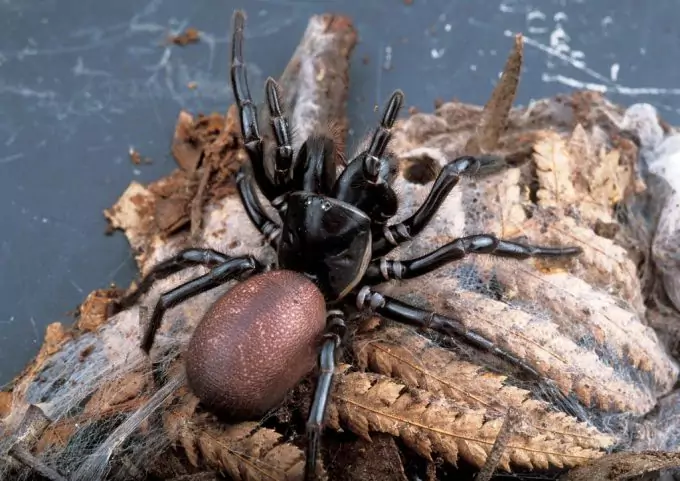
The symptoms will set on quickly with symptoms including tingling around the mouth, tongue twitches, excessive salivating, sweating, muscle spasms, and watery eyes. A rapid heartbeat and hypertension also occur and, if respiratory distress sets in, this can prove fatal. Just imagine your heart pounding while your lungs fail to function as they should. These are the extreme effects of this particular bite.
Preventing a bite
Prevention is always better than cure, and there’s no sense in taking any unnecessary risks. By gaining a proper understanding of the habits and behavior of this spider, you can take the necessary steps to avoid a bite from what is known as the most poisonous spider in the world. Look for this spider wherever you see logs and loose rocks.
You are most likely to see them during the hot summer months, particularly later in the season. They often come out of hiding after the rainfall floods their underground nests. If you spray pesticide, it can also cause them to vacate their home in search of a new one. See our instructions on how to make a DIY bug catcher to trap other bugs and pests that can be bothersome.

Image credit: sarahhalstead.com
In order to avoid being bitten by the world’s most poisonous spider, you should always wear the proper footwear when out on hikes. If you plan on performing garden work, you should also wear the right gloves to prevent the fangs from penetrating your skin. Wear long sleeves and pants and always be on the lookout for this spider with each and every step. If you live in parts known to be home to these spiders, you should always check your shoes before putting them on. You never know where one could be hiding. For the best hiking boots to protect you while outdoors, see our article on this important topic.
Bite treatment
When you set out to find out what the most poisonous spider in the world is, one of your primary concerns should be treatment of a bite. There is no doubt that immediate hospitalization is essential. There is literally no time to waste, and the antivenin will need to be administered immediately before the symptoms become too severe. The antivenin is administered as needed. Initially, two vials will be given. The patient is then monitored closely, and their vitals are taken every 15 minutes.
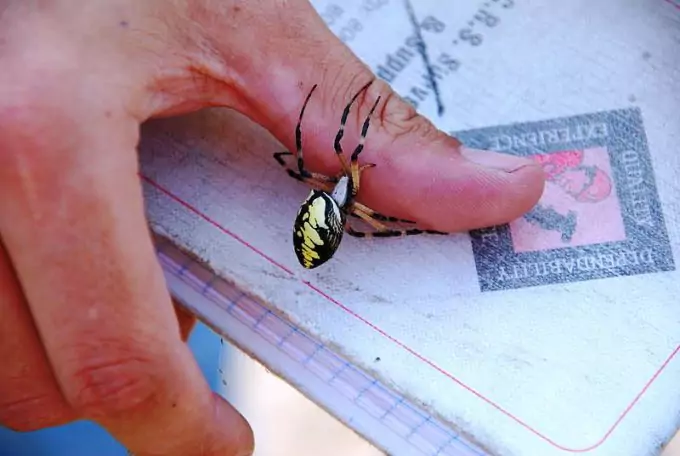
If the symptoms worsen or show no signs of improvement, another vial is administered, and the treatment continues as such until enough has been given to rid the body of the dangerous toxin. This antivenin was created in 1981 and, since then, there have been no recorded fatalities as a result of these spider bites. There are milking programs in place to ensure a regular supply of antivenin is always available. Quite a significant task considering the fact that it takes 70 milkings in order to produce a single vial.
If necessary, the patient will also be provided with oxygen to make their breathing easier. The wound itself will also be treated as deemed necessary by medical professionals. Blood and urine tests, EKGs, and even chest x-rays might be ordered if necessary. Fluids will be administered through an intravenous drip to help aid in hydration and a general feeling of well-being.
Identification and habits
The best form of defense against this dangerous spider is to understand how to identify it and its habitat. The more you learn about this fierce arachnid, the better your chances of preventing a bite. In addition, it’s also important that you are able to identify the spider should its strike be successful.
Physical appearance
This particular spider is quite significant in terms of size. Its body can reach a length of up to 2 inches. Both the male and female varieties are dark and glossy in appearance while the full length of the spider can reach 2 ¾ inches. The males are generally smaller than the females, but their legs are longer. The females also tend to live longer than the males. The eyes are closely grouped together yet this spider is not known for its vision.
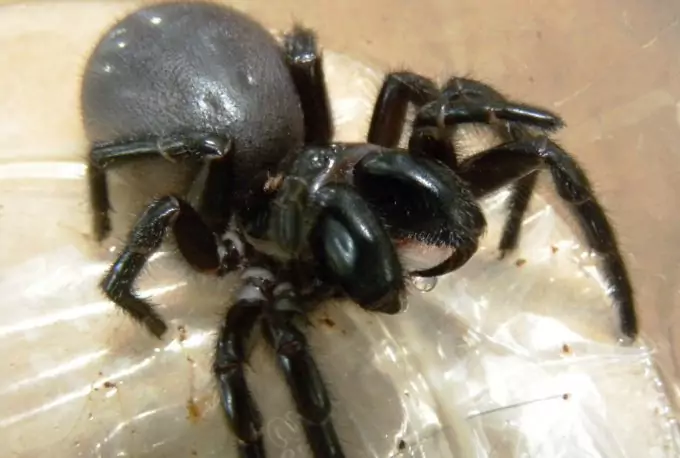
In fact, they are known to be rather poor of sight when compared to other species (like the Wolf spider), and they are generally slower too. The fangs are incredibly large in the spider world, and the muscles to which they are attached are incredibly powerful. So powerful, in fact, that this spider’s strike can crush she skull of a mouse.
Common behavioral traits
These spiders are particularly drawn to moist habitats. They seek moist clay and sand. They even enjoy making a hole in a tree trunk their home and even some shrubs and rocky areas. They build unique retreats which is how they earned their name. Their burrows are formed out of silk-lined tubes. The funnel-like entrance allows the spider rapid exit. The entrances are equipped with trip lines that let the spider know when prey is near. Some even have trapdoors to aid the slower moving creature in catching his next meal.
[the_ad_placement id=”in-text-2-type-r”]For the most part, they prey on insects, lizards, and frogs, although, some have been known to consume other spiders. The males will wander during the warm summer months in search of a mate. They tend to be more active at night since the heat of the sun takes quite a toll on them, so they favor cooler conditions. These spiders are instinctively and naturally aggressive. Although they are not the quickest attackers, their sheer technique is what has helped them survive for centuries.
When they make their attack, their large fangs pierce the skin, and the venom is released. In many cases, they might even strike multiple times – each of which with crushing force. Heavy rains can also prompt an exit from the burrow should it become flooded. They will seek higher ground and most likely find a new safe haven to wait out the showers. In some cases, this spider will warn before an attack.

Image credit: smh.com.au
He does so by rearing up on his hind legs and displaying his impressive fangs. This is when it is best not to provoke the creature further but rather retreat in a safe manner so that it does not manage to sink its teeth in. Some other spiders also make similar homes, but the funnel-like web is what sets these spiders apart from the rest. It is never a good idea to investigate a hole that might belong to such a dangerous creature. Poking at the hole can really provoke the spider and land you in the emergency room!
Male versus female
It’s important to note that only the venom from the male is life threatening. This is largely due to their behavior as well as the content of their venom. Females don’t wander about as much as males do which means that most of their time is spent well out of sight. The males wander between November and April, since these are the warmer months in the southern hemisphere. The females wait in their burrows and, when they are discovered by a male, the mating ritual begins. Sometimes their wandering results in them getting trapped in garages and houses.
As for the venom, the male’s contains something called Robustoxin. This is an incredibly powerful toxin that attacks the nervous system. It affects both humans and monkeys alike, however, it has no affect on other animals.
What to do in the event of a bite
Should you receive a bite from this dangerous predator, time really is of the essence. The first thing you need to do is try to safely ascertain if it is indeed the Sydney Funnel-Web that has attacked. If you can safely take a photo or get a closer look before it scurries away, this will benefit the work of any doctor.
Some recommend that you try to capture the spider, but this could result in additional bites, and you could set your focus on its capture rather than tending to your wound. Of course, whether you are bitten in the woods or at a Sydney home, it’s important to take some first aid measures while awaiting medical care. It’s these first few minutes that can make all the difference.
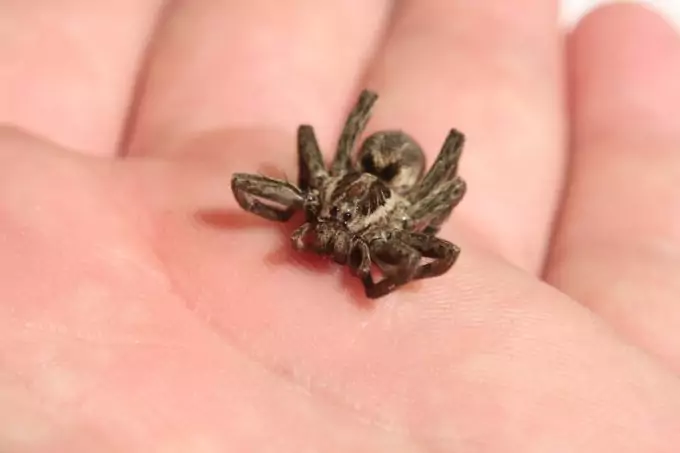
Firstly, no matter what, you should always remain calm. The more panic, the faster your heart will beat. This will pump the blood through your body along with the venom at a faster rate. Obviously, the faster it spreads, the faster it acts. Next, you need to apply pressure in just the right way to inhibit and restrict blood flow to this part of the body. So, if you are bitten on the forearm, you should bind the upper arm or bicep as well as the bitten area tightly to slow the flow of blood.
You should also avoid moving the affected limb. If possible, ask somebody accompanying you to aid you in making your way to a vehicle or call an ambulance – whichever will provide quicker results. You can restrict movement best by using some kind or splint and strapping the limb to the splint. Remove any rings and tight fitting clothing too if possible. You want the bite victim to be as comfortable as possible, and these bites can result in severe inflammation.
The last thing you need is your clothing or jewelry making you even more uncomfortable. Some other important information to ascertain, while bandaging the affected area, is the weight and age of the bite victim as well as any medical conditions or medication they are taking. Take note of their vital signs and note the time of the bite since time is critical and the clock is ticking! If you call for assistance, it’s important that you specify the type of spider that bit you, your friend, or loved one. These kinds of specific details will ensure that the medics are fully prepared to offer prompt treatment.
Similarly, if the bite victim is driven to the hospital, you should not wait or stand in line. As soon as you arrive, you need to express the urgency of the situation, present the wound and, if you have a photo or the specimen itself, you should also show this to the doctor.
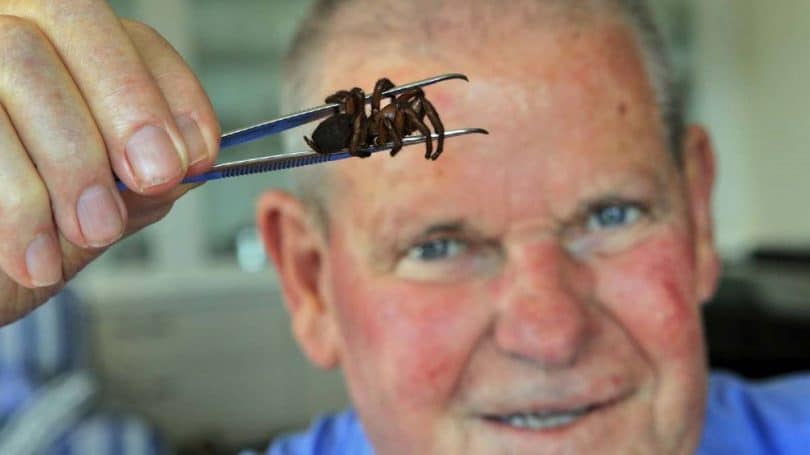
The patient should be tended to without delay given the urgency of this matter. Children and those with weak immune systems are the most vulnerable of all. They tend to be most affected by the venomous symptoms. Treatment can last anything from a few days to weeks.
It all depends on the severity of the bite, the body’s reaction, and how well the patient responds to treatment. The patient will only be discharged from hospital once the medical team is happy with their vital signs and are sure the toxins have left their system.
How does antivenin work?
Venom is made up of a combination of various proteins. These proteins each cause various reactions in the human body. Combined, these reactions become even more severe. Each type of venom contains its own combination of proteins which is why we see different symptoms resulting from different bites. Regardless of the venom, it needs to come in contact with the blood in order to take effect. Antivenin contains antibodies.
The antibodies are developed using venom extracted from the specimen itself. When you receive a vial of antivenin, you are being provided with the precise antibodies required to fight the invasion of these proteins. The antivenin thereby neutralizes the threat.
In some cases, the body can develop its own antibodies. In such cases, a bite of this nature will require no attention. Unfortunately, there are many forms of venom that are so fast acting that the body is unable to fight its effects. The antivenin provides the tools to help the body fight and eliminate the threat.
Other similar threats
The Sydney Funnel-Web is not the only spider to be weary of. Each country and part of the world has its own list of deadly creatures. The Brazilian Wandering Spider, the Black Widow, the infamous Brown Recluse, and the Wolf Spider are some of the most deadly across the globe. In all of these cases, symptoms vary and immediate treatment should be obtained just as you would in the event of a Sydney Funnel-Web spider bite.
[the_ad_placement id=”in-text-3-type-r”]No matter where you live or where you enjoy your holidays, it’s a good idea to keep a phone nearby with the local emergency number on speed dial. In the event of a bite, remain calm and try to get a look at the culprit. Positive identification is essential for swift treatment.






I used to adore spiders, not anymore. Most spiders I learned about like to be left alone and only attack when provoked. But this one is a big nope, a disaster waiting to happen.
Hi John,
The fact is that, from a human perspective, spiders just aren’t that dangerous. While many spiders can give you a nip, in most cases it is less troublesome than a bee sting.
At first, I wanted to learned more about spiders because I almost got bitten by handling a spider one time without knowing it was poisonous. Since then, whenever I travel, I make it a point to learn about the area’s native spiders, knowing their appearance and what to do in case of a bite.
Hi Nidal,
Thank you for sharing your experience.
Most people are afraid of spiders but most spiders are afraid of us. As a rule of thumb, I try to stay clear of areas known to have a nest or several nests of venomous spiders and I also bring a universal anti-venom just in case.
Also, most venomous spiders are not aggressive and they only attack when provoke. If in case you do encounter one again, try to move away slowly.
Samuel
I just saw two spiders in my house today and one was a hobo spider and the second one was a spider. They were babies, but we decided to just take them outside. I love spiders when I was like five and then I am now 23 so high now don’t like spiders cause they’re really like not my thing anymore.